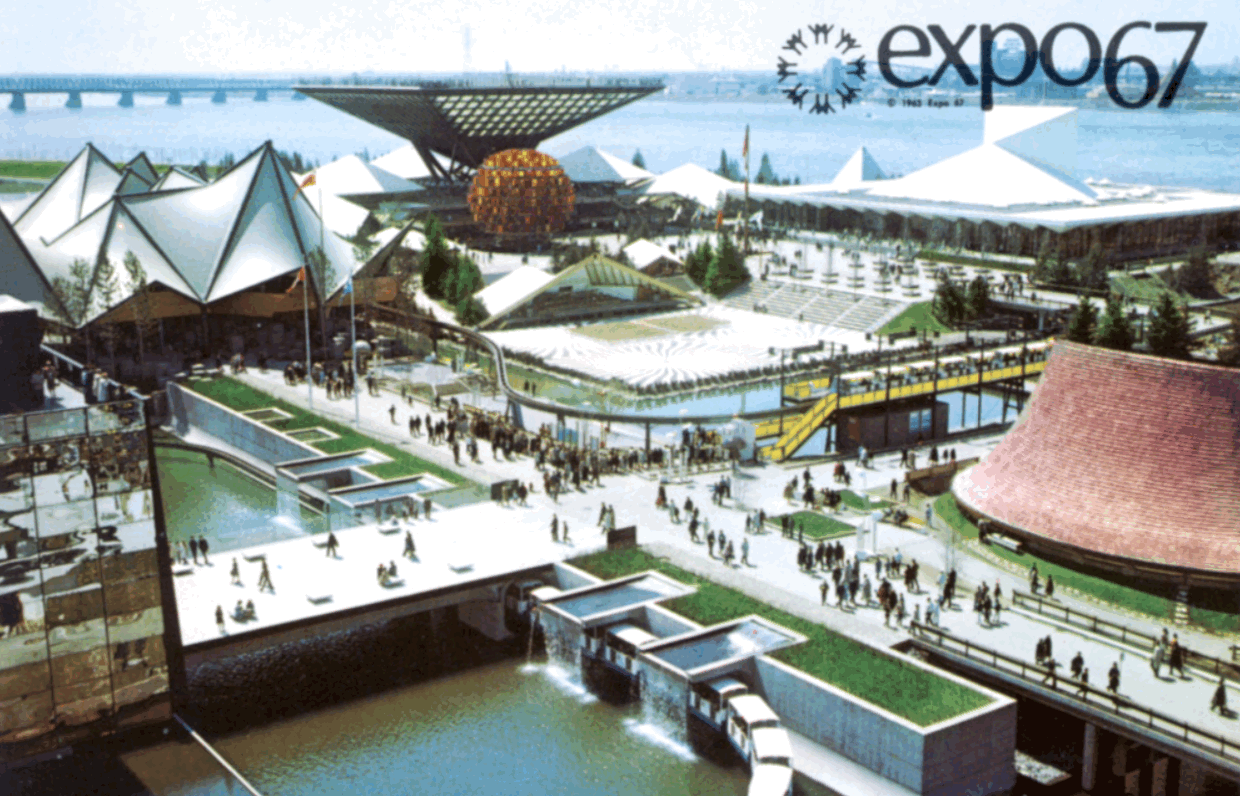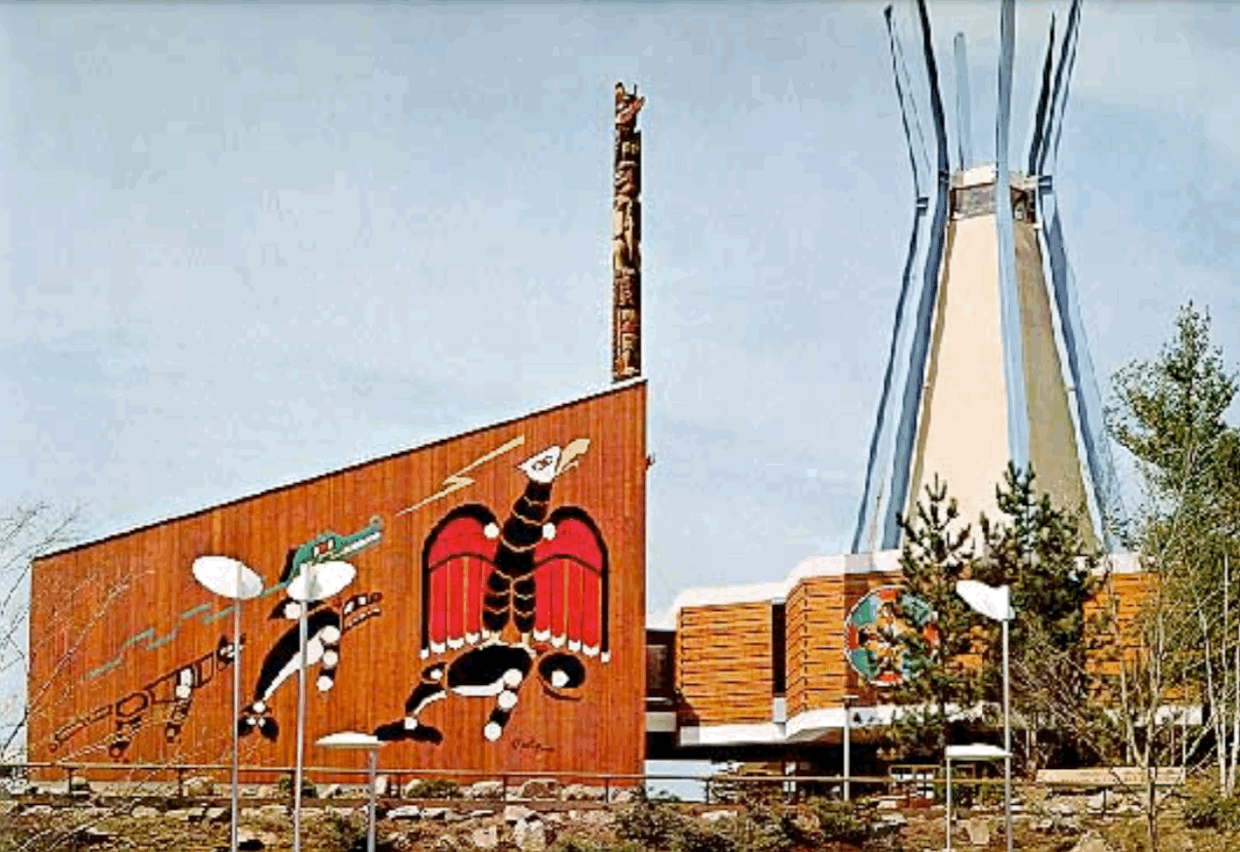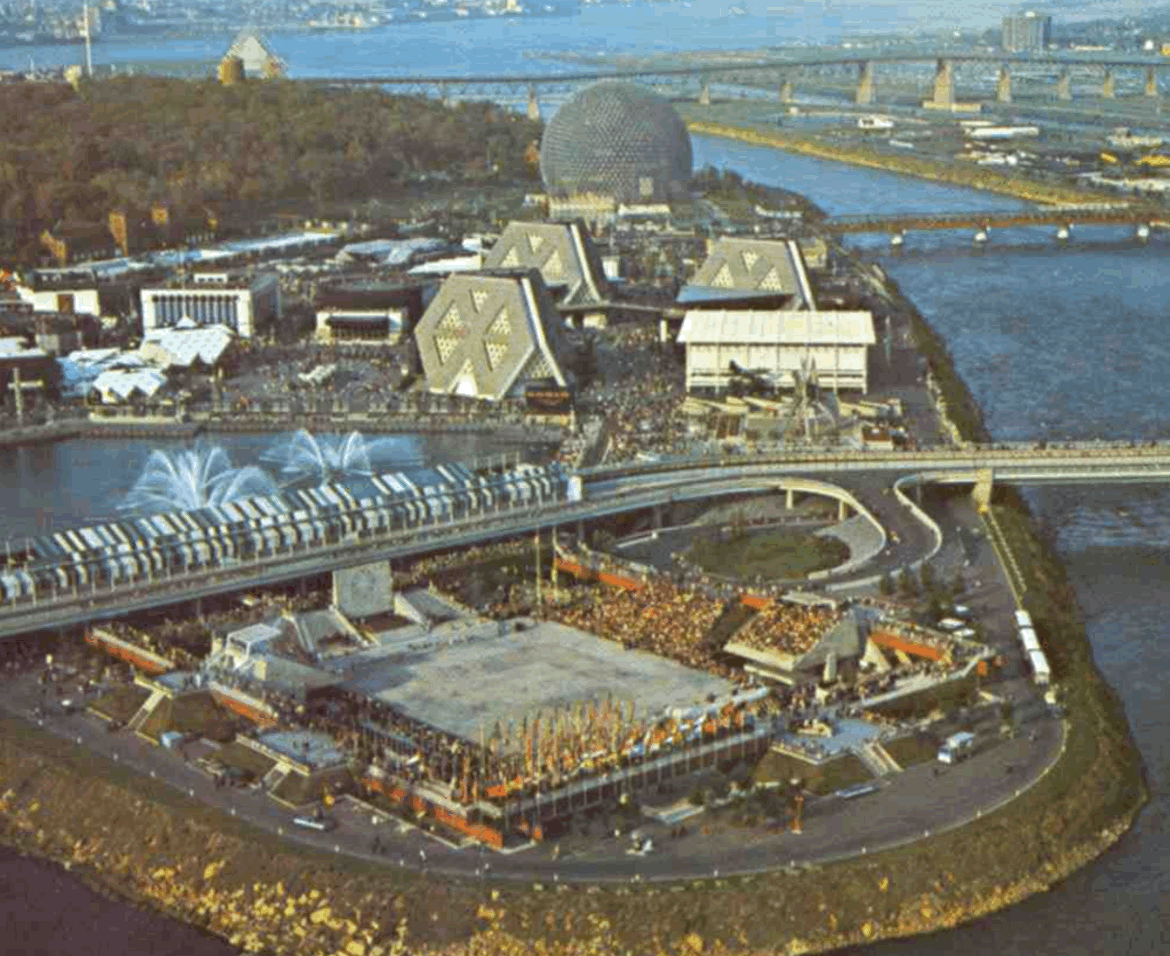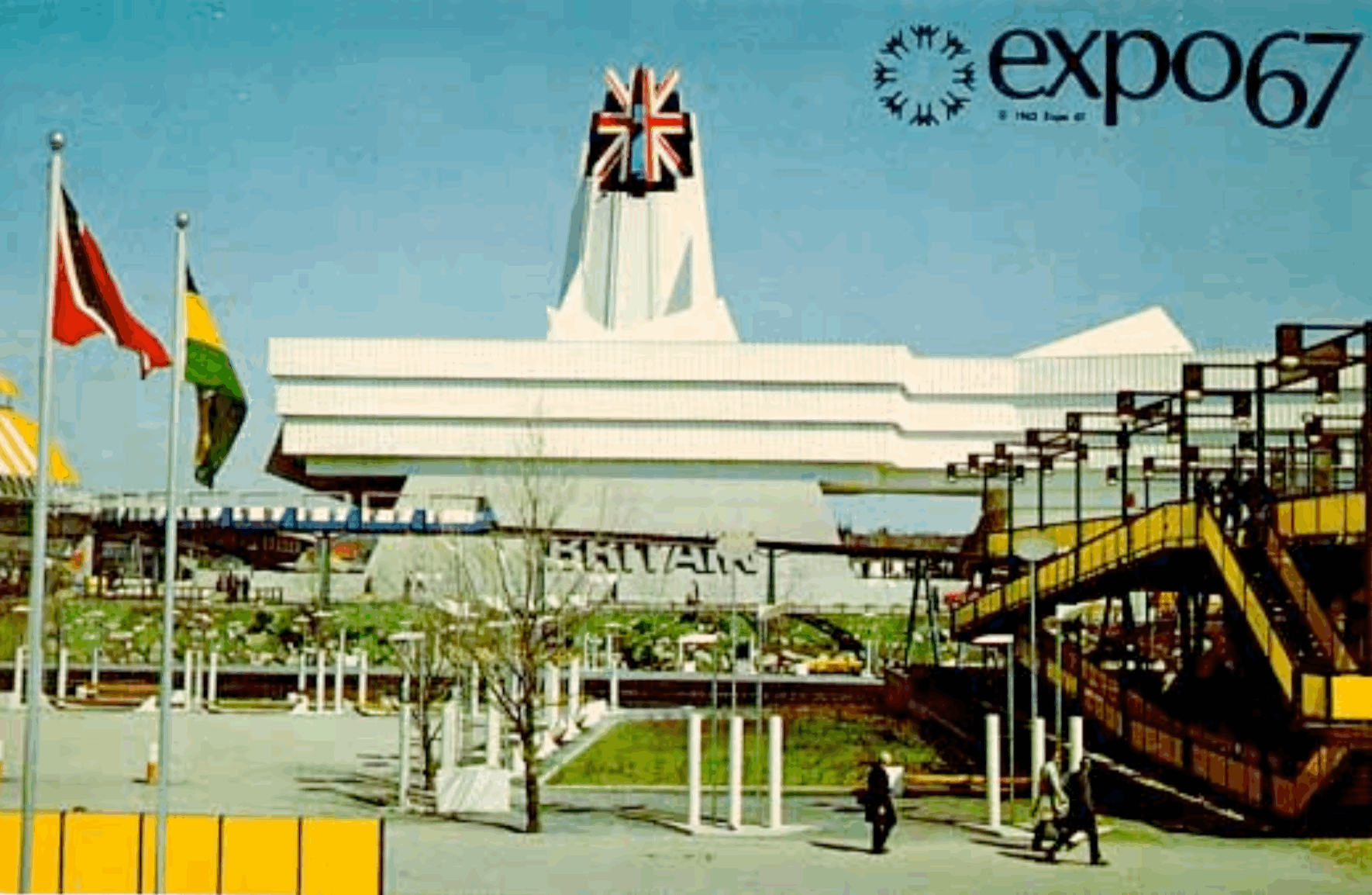Alternative Editorial: Making Art, Making Politics
The Alternative - Uffe Elbaek, Mark Hessellund Beanland and myself - are back in Montreal, for the second phase of our collaboration with Concordia University, ‘Making Art, Making Politics’. Since we left, the project took a leap into the ether by getting permission from the municipal authorities to use the long-disused Canada Pavilion of `Expo 67 as a site for the third event in November (the site map above - and more on this at the end of the piece).
It was an extraordinary coup by the teamwork of the Faculty of Fine Arts – staff and students - at Concordia and the space-makers Entremise our partners in the mission to activate the site.
Suddenly we are in a collective, global imagination space: whatever we do here will not only be visible but will touch a chord.
1967 is remembered by many as the Summer of Love: when global eyes were on a very specific small area of San Francisco – Haight Ashbury and the Woodstock Festival – where 100,000 mostly young people convened to step outside of the conventional boundaries of society.
They declared peace over war; freedom over obedience; mind, body and spirit over material concerns. And – without the help of the internet – that moment was magically transported, awakening similar communities around the USA, Canada and Europe. It was the birth of the hippie movement - reverberations of which still resonate strongly in our politics today.
Montreal, at that time, was less a hippie enclave than a city looking for a boost. Their original bid to be hosts of Expo 67 was beaten by Moscow – but it proved too expensive for the Russians and with only 2 years to plan, the Canadians stepped in.
For those who have never experienced an Expo, it’s hard to imagine what a challenge that is. But lucky for us, Monika Gagnon, a professor in Communication Studies at Concordia- whose father designed the inside of the Christian pavilion – was on hand to share some of what was going on.






[Selections from 67 Expo - full PDF here]
Quebec itself was in a state of transition in 1967. Dominated by the Catholic Church, a large section of the population was seeking independence from Canada to escape secularisation.
But the future was also banging loudly on the door, in the form of a technological revolution that would take the whole of the modern world from analogue to digital connectivity. This opportunity to showcase the cutting edge of change was a soft-power opportunity they could not refuse.
Yet, as Monika explained, the time frame made for some useful inconsistencies: decisions were made fast and often reflecting different currents of change. For example, there was poor representation from the global South: Africa was only offered one pavilion to represent the entire continent.
At the same time, the hostesses selected to guide the public through the exhibition came from across all the indigenous people of the Americas – so that the exposition could be interpreted from very different, sometimes critical historical perspectives.
This sense of being at the crossroads of change is echoed in Montreal today. On the one hand it’s a global hub for the development of artificial intelligence, pulling the people forward into a still unimaginable future.
Yet this is also a city challenged by internal culture battles, with over 65% of people Francophone, 12.6% Anglophone and only 20.4% bilingual.
In addition, the growing population of immigrants and refugees are beginning to add new accents to the cultural landscape. Many of them are a recent influx of the ‘French from France’, intensifying the difference between Quebec and the rest of Canada - itself increasingly challenged by its neighbour, Trump’s America. It’s a city more growing and becoming than settled.
All this is reflected in our group of students and faculty, who are using their art to make politics of a kind that rises to meet the complex demands on global citizens today.
In this four-day intensive, we’ve seen workshops that take the human predicament right down to the existential and deeply felt experience of what it is to live and work in a modern, global city. And then back up to how to find meaningful expression in that chaos, to have some purchase on what could be going forward.
The first day Eduardo Della Foresta, in a workshop entitled Creative Space and Institutional Dependency, shared his extraordinary story of coming back from a life-changing car accident, losing his business and experiencing what it means to be excluded from the dominant culture of growth and success.
As we were drawn into his journey of slowly returning creativity, he was also involving us in a hands-on collaboration in which we found ourselves making a work of art together: a fully stretched vinyl canvas on which we had drawn portraits of each other.
By the time we had understood the full impact of his work – conveyed by means of a van which acts like a mobile art studio, so that he can bring the opportunity of making to anyone who is not free to move around the city – we were ourselves transformed. From a group of individuals into a sentient community.
In another workshop, dance student Fia Grogono awakened us to a more embodied sense of community. Both through reclaiming our physical space - no matter how small - and through making physical contact with each other. In a short space of time, the idea that autonomy was in conflict with connectedness was effectively broken down.
A third, introducing the work of Techtonic Theatre, helped us to break down our daily lives into a series of observable moments – into which we could insert multiple perspectives.
Using the power of theatre and improvisation, we were able – in a very short time – to see the power of framing and narrative, giving rise to a discussion about the media and its ability to shape reality.
In a fourth, Dave Shaw introduced to us the concept of Object Agnotology - the study of ignorance. Earlier that day, Uffe Elbaek had asked us to consider “What is this building asking for?” a question which might prompt us to consider what we don’t know about the building. Dave described three kinds of ignorance:
as a native state: we are the product of our life journey
as a passive construct: knowing that knowledge is available, but we just don’t avail ourselves of it
as an active construct: creating the conditions for knowledge to be withheld or confused. e.g. always reporting climate change as a debatable issue with equal arguments for and against, causing ambiguity.
Dave presented a compelling tool for exploring the present moment as one in which we cannot rest in ignorance. In this era of fake news, where only 2-5% of people in Europe are members of political parties, might we be complicit in the destruction of our planet?
All of these very individual, often personal offerings were intensely political in nature: they helped us to translate challenging, felt human experience into new ways of understanding power – both our own, and the power over us. With the tools of agnotology, we were creating a new epistemology - invigorated ways of knowing and validating.
Interspersed with the students’ work, The Alternative offered tools for harnessing this power into the kind of action that might engage others and cause them to step up and begin to occupy the future. Not simply by getting out the vote, but by prefiguring how society might look and feel in the future if people could bring their citizenship to life.
How this can translate into new (and Alternative) political expression and culture for the whole of society will be the subject of our next intensive in November.




